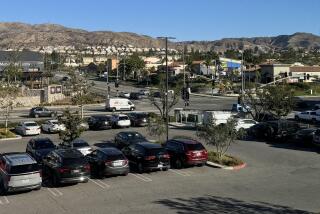Science Olympiad Issues Challenges : Successor to Fair in Simi Valley Tests Pupils’ Teamwork, Brainpower
- Share via
The elementary school science fair, with projects such as volcanoes made of clay and plastic human hearts pumping red Kool-Aid, was officially buried Thursday by the Simi Valley Unified School District.
It was replaced by the Science Olympiad, a series of challenging events that tested the mental and physical agility of youngsters from 15 Simi Valley elementary schools.
There was the pentathlon in which one of the five games required students to bounce a tennis ball five times on the face of a racquet before answering a physical-science question.
In a separate event, problem-solving skills were tested when an official handed team members 50 drinking straws and 50 straight pins and told them to build a skyscraper.
Scientific knowledge was tested in the event “Name the Organism,” in which students were asked to identify 31 animals and plants.
Science Bowl
Teamwork and brainpower were put to the test in the Science Bowl. Questions were asked of two teams made up of four students from two schools. Each team had a few seconds to discuss the answer, push a buzzer and shout out its response.
During the competition between teams from Mountain View and Hollow Hills elementary schools, anguished looks crossed the faces of members from both teams when they were asked: “Which does the body have more of, bones or muscles?”
After furious whispering by both teams, a blond lad on the Mountain View team stretched his arm across the table, hit the buzzer and shouted, “Muscles!”
“Correct,” answered the quizmaster.
Team members clenched their fists in a brief victory celebration and quickly regained their composure in preparation for the next question.
Overall, there were seven events for teams made up of fourth- through sixth-grade students and four events for teams made up entirely of third-graders.
The goal of the competition, according to district officials, was to generate the same kind of excitement for science that exists for sports.
At the end of the day, awards were handed out to the top teams and individual winners in different events.
The large number of prizes was in contrast to the few awards presented at the traditional science fairs. The limited opportunity to win at those fairs often frustrated students and led some youngsters to tell teachers that creating a project was a waste of time, educators said.
“The science fair just wasn’t doing the job anymore,” said Esther Schultheis, a curriculum and instruction consultant to the Simi Valley district.
“Plain and simple, the science fair had become a drag.”
Schultheis said that, in the past few years, students showed little passion for the annual district science fair. What’s more, Simi Valley educators came to realize that, often, parents did most of the work. Instead of showcasing student creativity, the science fair had become a forum for parents to try to outdo each other.
So, to work up student enthusiasm and redirect parent participation, Simi Valley officials decided to dump the traditional science fair.
At Thursday’s meet, no one seemed to mind.
“I was in the district fair last year, but this is more fun,” said Jeff Tani, a Berylwood sixth-grader. “This is more energetic. At the district show, all you did was show your project, have a personal interview and wait for the ribbons.”
“In the Olympiad, the kids learn how to work as a team, they learn problem-solving and they’re motivated to learn as much science as they can,” said Big Springs fourth-grade teacher Donna Moeller.
“Preparing for this became a family project,” said Ruth Winfield, whose daughter attends Simi Elementary School.
“My older daughter would make up little science quizzes for the younger one to take. We all started asking each other science questions. I even learned a lot.”
More to Read
Sign up for Essential California
The most important California stories and recommendations in your inbox every morning.
You may occasionally receive promotional content from the Los Angeles Times.













